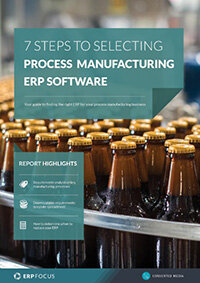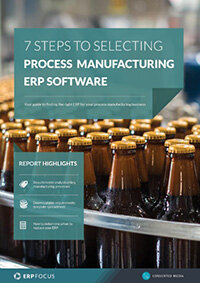A food manufacturing compliance checklist for US companies
Food manufacturing has become a very complex business with more requirements all the time. But, thankfully, the food manufacturers are taking care. We still can buy groceries and there are healthy options to choose from. Let’s look at some of those requirements.
In the United States, there are two primary regulators. The FDA (Food and Drug Administration) and the EPA (Environmental Protection Agency) both protect consumers.
FDA compliance requirements
HACCP (Hazard and Critical Control Points) regulations are one of the FDA’s main initiatives. Manufacturers must identify what hazards might exist and establish control points best suited to capture and control those hazards.
FDA says that manufacturers are responsible for sanitation in the facilities and proper labeling to help protect consumers. Because the manufacturer is responsible, they must use ERP and other tools at their disposal to meet requirements.
The FSMA (Food Safety Modernization Act) Says each facility is required to prepare and implement a food defense plan. This written plan must identify vulnerabilities and actionable process steps, mitigation strategies, and procedures for food defense monitoring, corrective actions and verification
Employee training is one of the primary methods a manufacturer should use to comply. ERP can track training and certifications each employee has. ERP then should be set so that an employee who possesses the necessary training or certifications must perform any operation. An employee logs on a job and operation. Only if they pass the training threshold, will ERP allow them to work on a job.
FDA requires manufacturers to follow CGMP (Current Good Manufacturing Practices) Following CGMPs ensures the quality of processed foods and dietary supplements. It also ensures that processed food or dietary supplements are packaged and labeled as specified in the master manufacturing record.
Scheduling and sequencing of work in the manufacturing facility is another key point of CGMP where ERP can help meet compliance requirements. When the food being processed now contains allergens, milk, or peanuts, the equipment must be completely cleaned after that batch is finished and before another batch moves through the process. That cleanup should be done and logged by a person with the training required to pass any requirement. Only process equipment completely free of known and expected hazards will be used for food processing.
EPA compliance requirements
The EPA mostly looks at food processing from the outside. Were pesticides used on the farm where food grew? Before those products enter the manufacturing process, those pesticides must be checked to ensure the level is now reduced below a safe level.
EPA also monitors effluents related to meat and poultry production. Too often we see that the spinach growing downhill became contaminated. Greenhouse gases are a part of dairy production - drive by a dairy operation any day and take a whiff. EPA wants to ensure people in the next town have clean air to breathe.
Seafood production is another of EPA’s domains. We enjoy a good salmon and we do not want to worry that the rest of that fish ended up polluting someone else’s seashore.
Your food manufacturing ERP has the power to help you with your compliance requirements. Be sure to use it.
Free white paper

7 Steps to Selecting Process Manufacturing ERP
Your guide to finding the right ERP software for your process manufacturing business

Featured white papers
-

7 Steps to Selecting Process Manufacturing ERP
Your guide to finding the right ERP software for your process manufacturing business
Download
Related articles
-

ERP for Food Distributors: Key Functionality
In a modern world where products are tailored to consumers, why should ERP for food distributors ...
-

CMMC Compliance: What Aerospace and Defense Manufacturers Need to Know
Key insights on CMMC compliance, deadlines, and securing DoD contracts with CMMC 2.0 certificatio...
-

Process manufacturing ERP: formulas and recipes
Find out about the challenges your process manufacturing ERP will face when it comes to recipes a...

